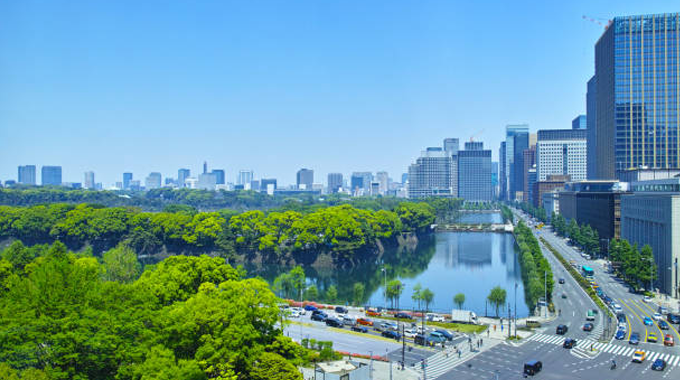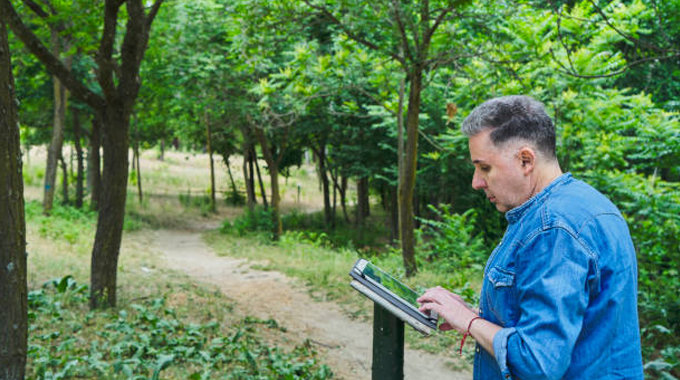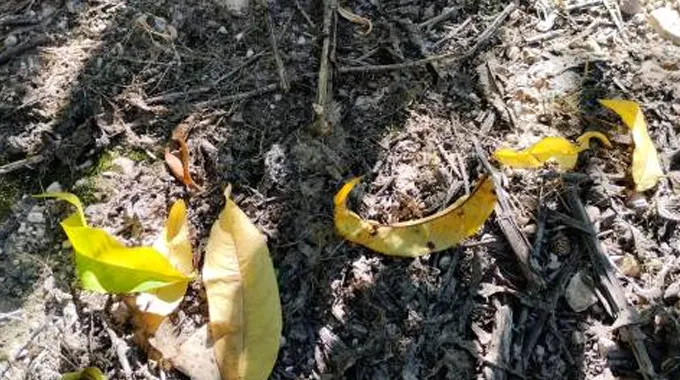Adaptive Management Practices for Urban Forests
- August 19, 2024
- 0 comment
Adaptive management practices for urban forests are essential for maintaining the health and sustainability of these green spaces in dynamic urban environments. This approach involves a continuous cycle of planning, implementing, monitoring, evaluating, and adjusting strategies based on observed outcomes. Urban forests face unique challenges such as limited space, pollution, climate change, and diverse stakeholder interests. Adaptive management allows for flexible responses to these challenges by integrating scientific research, community input, and real-time data.

By regularly updating management practices based on new information and changing conditions, urban forest managers can better address issues such as pest outbreaks, soil degradation, and tree health. This iterative process ensures that urban forests remain resilient and provide critical ecosystem services, including air purification, temperature regulation, and recreational spaces for urban residents. Engaging the community and fostering collaboration among urban planners, ecologists, and policymakers are also crucial components of successful adaptive management in urban forests, promoting a shared vision and collective action toward sustainable urban ecosystems.
List of Adaptive Management Practices for Urban Forests
- Principles of Adaptive Management
- Planning Phase
- Implementation Phase
- Monitoring and Data Collection
- Evaluation and Analysis
- Adjustments and Adaptation
- Challenges and Solutions
- Community Engagement and Collaboration
- Future Directions and Innovations
Principles of Adaptive Management

Definition and Key Concepts
Adaptive management is a systematic process for improving resource management by learning from the outcomes of implemented strategies. It involves a continuous loop of planning, action, monitoring, evaluation, and adjustment, allowing managers to respond to changing conditions and new information. The key concepts include flexibility, iterative learning, and stakeholder involvement.
Benefits of Adaptive Management in Urban Forestry
Adaptive management offers numerous benefits for urban forestry. It allows for more responsive and effective management strategies, promotes learning and innovation, and enhances the resilience of urban forests. By continuously incorporating new data and stakeholder feedback, adaptive management ensures that urban forests can better withstand challenges such as climate change, pollution, and urban development.
Planning Phase

Assessing Urban Forest Conditions
The planning phase begins with a thorough assessment of the current conditions of the urban forest. This includes inventorying tree species, health, and distribution, as well as evaluating soil conditions, water availability, and other environmental factors. Understanding these baseline conditions is critical for setting realistic and achievable management goals.
Setting Clear Objectives and Goals
Setting clear objectives and goals is a fundamental step in the adaptive management process. These goals should be specific, measurable, achievable, relevant, and time-bound (SMART). Objectives might include increasing tree canopy cover, improving tree health, enhancing biodiversity, or mitigating urban heat islands.
Involving Stakeholders and Community
Engaging stakeholders and the community is essential for the success of adaptive management in urban forestry. Stakeholders include local government, non-profits, businesses, and residents. Involving these groups helps ensure that management strategies are aligned with community needs and values and promotes shared responsibility for urban forest health.
Implementation Phase
Developing and Executing Management Strategies
In the implementation phase, specific management strategies are developed and executed based on the goals set during the planning phase. These strategies may include planting new trees, pruning existing ones, controlling pests and diseases, and improving soil and water conditions.
Integrating Best Practices and Innovations
To maximize the effectiveness of management strategies, it is important to integrate best practices and innovations. This might involve using the latest research on tree species selection, applying advanced irrigation techniques, or adopting new technologies for monitoring tree health.
Coordinating with Urban Planners and Policy Makers
Effective coordination with urban planners and policymakers is crucial for the successful implementation of urban forest management strategies. Collaboration ensures that urban forestry initiatives are integrated into broader urban planning efforts, such as land use planning, transportation development, and climate action plans.
Monitoring and Data Collection

Methods for Monitoring Urban Forest Health
Monitoring is a critical component of adaptive management. Various methods can be used to monitor urban forest health, including visual inspections, remote sensing, and data collection using Geographic Information Systems (GIS). Regular monitoring helps detect issues early and provides data for evaluating management effectiveness.
Using Technology and Tools for Data Collection
Advancements in technology have significantly improved data collection for urban forest management. Tools such as drones, sensors, and mobile apps enable efficient and accurate monitoring of tree health, growth, and environmental conditions. These technologies facilitate real-time data collection and analysis.
Importance of Baseline Data
Establishing baseline data is essential for measuring progress and evaluating the impact of management strategies. Baseline data provide a reference point for comparing changes over time and help identify trends and patterns in urban forest health and growth.
Evaluation and Analysis

Analyzing Monitoring Data
Once data is collected, it must be thoroughly analyzed to understand the outcomes of implemented strategies. This involves comparing current data with baseline conditions and assessing changes in tree health, canopy cover, biodiversity, and other key indicators.
Assessing Progress Towards Goals
Evaluating progress towards the set objectives and goals is a vital part of the adaptive management process. This assessment helps determine whether the management strategies are effective or if adjustments are needed to achieve the desired outcomes.
Identifying Successes and Areas for Improvement
Through evaluation and analysis, successes can be identified and celebrated, providing valuable insights for future management. Additionally, areas for improvement can be pinpointed, guiding the development of more effective strategies in the next management cycle.
Adjustments and Adaptation

Revising Management Strategies Based on Evaluation
Based on the evaluation results, management strategies should be revised and adapted as necessary. This iterative process ensures that management practices remain relevant and effective in addressing the evolving challenges of urban forestry.
Incorporating New Research and Feedback
Incorporating new research findings and stakeholder feedback is crucial for the continuous improvement of management strategies. Staying informed about the latest developments in urban forestry science and technology helps managers make evidence-based decisions.
Flexibility in Decision Making
Flexibility is a core principle of adaptive management. Urban forest managers must be prepared to make adjustments in response to unexpected changes, such as extreme weather events, pest outbreaks, or new policy directives. This adaptability enhances the resilience of urban forests.
Challenges and Solutions
Common Challenges in Urban Forest Management
Urban forest management faces several challenges, including limited space, conflicting land uses, pollution, and climate change. These challenges can hinder the health and growth of urban trees and require innovative solutions.
Strategies for Overcoming Barriers
To overcome these challenges, urban forest managers can employ a variety of strategies, such as prioritizing native species, enhancing soil and water management practices, and promoting policies that support urban forestry initiatives. Collaboration with stakeholders is also key to addressing these barriers.
Community Engagement and Collaboration
Importance of Public Involvement
Public involvement is critical for the success of urban forest management. Engaging the community fosters a sense of ownership and responsibility for urban green spaces, encouraging residents to participate in tree planting, maintenance, and advocacy.
Educating and Empowering Local Communities
Education and outreach efforts can empower local communities to take an active role in urban forest management. Workshops, seminars, and informational campaigns can raise awareness about the benefits of urban forests and how residents can contribute to their care.
Building Partnerships with Stakeholders
Building strong partnerships with stakeholders, including local governments, non-profits, businesses, and educational institutions, enhances the effectiveness of urban forest management. Collaborative efforts leverage diverse expertise and resources for the benefit of urban forests.
Future Directions and Innovations
Emerging Trends in Urban Forestry
Emerging trends in urban forestry, such as green infrastructure, urban agroforestry, and climate-resilient tree species, offer new opportunities for adaptive management. These trends reflect a growing recognition of the multifunctional benefits of urban forests.
Potential Technological Advances
Technological advances, such as artificial intelligence, machine learning, and advanced sensor networks, have the potential to revolutionize urban forest management. These technologies can enhance monitoring, data analysis, and decision-making processes.
Vision for the Future of Adaptive Management in Urban Forests
The future of adaptive management in urban forests lies in the continued integration of innovation, community engagement, and scientific research. By embracing these elements, urban forest managers can ensure that urban forests remain vibrant, healthy, and resilient, providing critical ecosystem services for generations to come.
Frequently Asked Questions (FAQs)
1. What is adaptive management?
Adaptive management is a systematic process for continually improving management policies and practices by learning from the outcomes of previously implemented strategies. It involves an ongoing cycle of planning, implementation, monitoring, evaluation, and adjustment.
2. Why is adaptive management important for urban forests?
Adaptive management is crucial for urban forests because it allows for flexible and responsive management strategies that can adapt to the dynamic and complex nature of urban environments. This approach helps ensure the health, resilience, and sustainability of urban forests.
3. What are the key principles of adaptive management?
The key principles of adaptive management include flexibility, iterative learning, stakeholder involvement, and the use of scientific research and real-time data to inform decision-making.
4. How do you assess urban forest conditions?
Assessing urban forest conditions involves inventorying tree species, health, and distribution, as well as evaluating soil conditions, water availability, and other environmental factors. This assessment provides baseline data essential for setting management goals and strategies.
5. What are SMART goals in the context of urban forestry?
SMART goals are specific, measurable, achievable, relevant, and time-bound objectives set during the planning phase of adaptive management. These goals guide the development and implementation of management strategies.
6. How are stakeholders involved in adaptive management?
Stakeholders, including local government, non-profits, businesses, and residents, are involved through consultations, public meetings, and collaborative decision-making processes. Their input helps ensure that management strategies reflect community needs and values.
7. What are some methods for monitoring urban forest health?
Methods for monitoring urban forest health include visual inspections, remote sensing, GIS data collection, and the use of drones and sensors. Regular monitoring helps detect issues early and assess the effectiveness of management strategies.
8. Why is baseline data important?
Baseline data provides a reference point for comparing changes over time. It is essential for measuring progress, evaluating the impact of management strategies, and identifying trends in urban forest health and growth.
9. How do you evaluate and analyze monitoring data?
Monitoring data is analyzed by comparing current conditions with baseline data to assess changes and progress towards goals. This analysis helps identify successes, areas for improvement, and informs adjustments to management strategies.
10. What does it mean to adapt management strategies?
Adapting management strategies involves revising and updating practices based on the evaluation of monitoring data, new research, and stakeholder feedback. This iterative process ensures that management remains effective and relevant.
11. What are common challenges in urban forest management?
Common challenges include limited space, pollution, climate change, conflicting land uses, and securing funding. Addressing these challenges requires innovative solutions and collaborative efforts.
12. How can technology aid in urban forest management?
Technology aids in urban forest management through advanced monitoring tools like drones, sensors, and GIS, which provide accurate and real-time data. Additionally, technologies like AI and machine learning can enhance data analysis and decision-making processes.
13. Why is community engagement important?
Community engagement is important because it fosters a sense of ownership and responsibility for urban forests among residents. Involving the community in tree planting, maintenance, and advocacy efforts enhances the success and sustainability of management practices.
14. What are some emerging trends in urban forestry?
Emerging trends include green infrastructure, urban agroforestry, climate-resilient tree species, and the use of advanced technologies for monitoring and management. These trends reflect a growing recognition of the multifunctional benefits of urban forests.
15. What is the future of adaptive management in urban forests?
The future of adaptive management in urban forests lies in the continued integration of innovation, community engagement, and scientific research. Embracing these elements will ensure that urban forests remain vibrant, healthy, and resilient, providing essential ecosystem services for urban residents.

Gilbert Griffin
Forestry AuthorGilbert Griffin is a forest management expert specializing in sustainable practices, forest health, conservation, and land management. With extensive knowledge in pest control, disease management, and habitat restoration, Gilbert develops strategies to preserve forest ecosystems and biodiversity. Passionate about the natural world, Gilbert adapts to changes in forest management and stays updated through continuous learning. Gilbert also provides seasonal advice to optimize forest care throughout the year.









Leave your comment